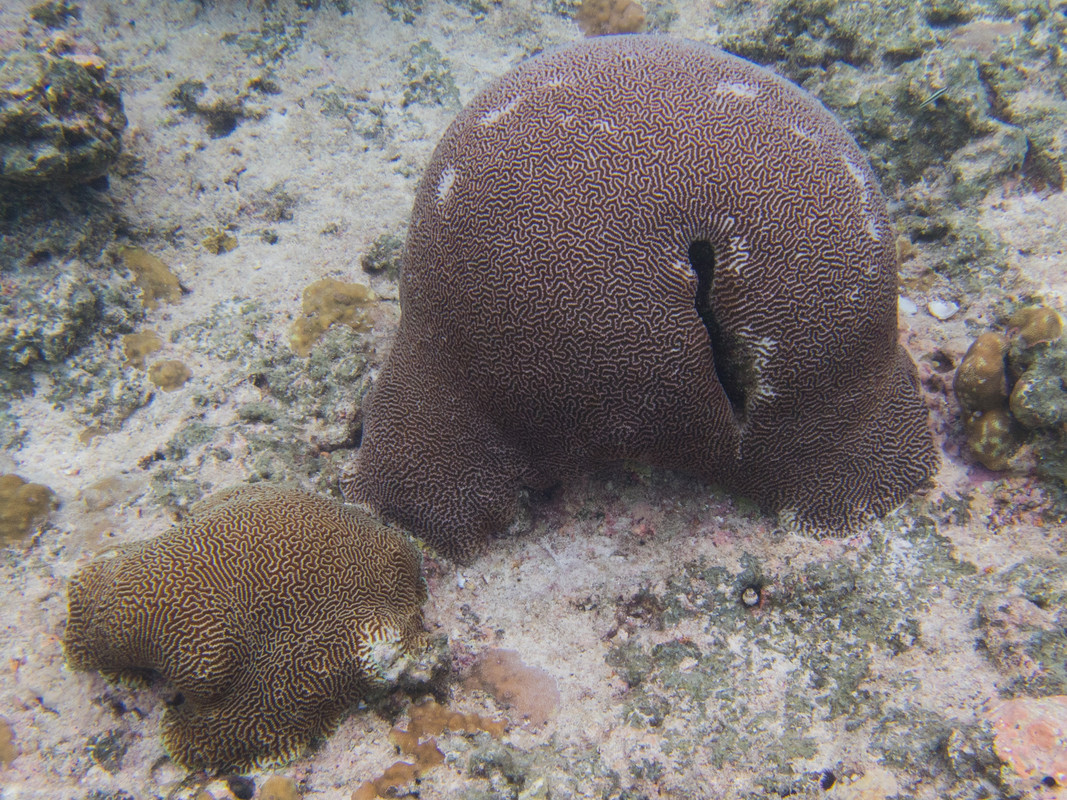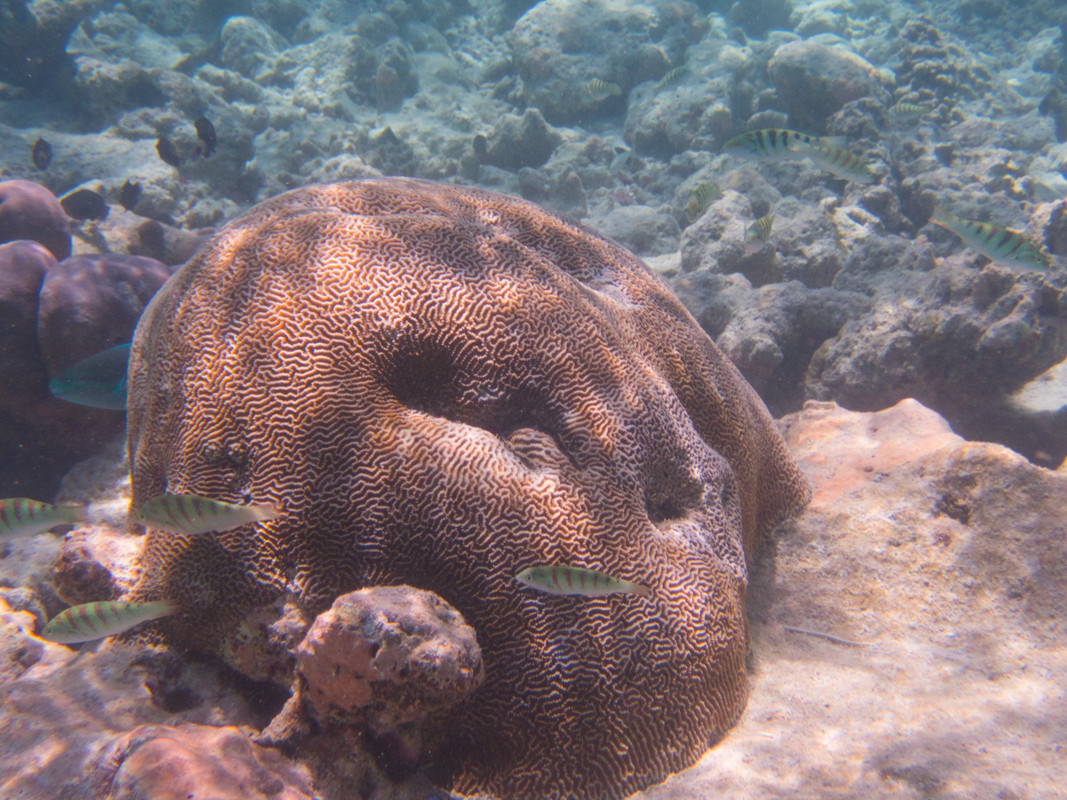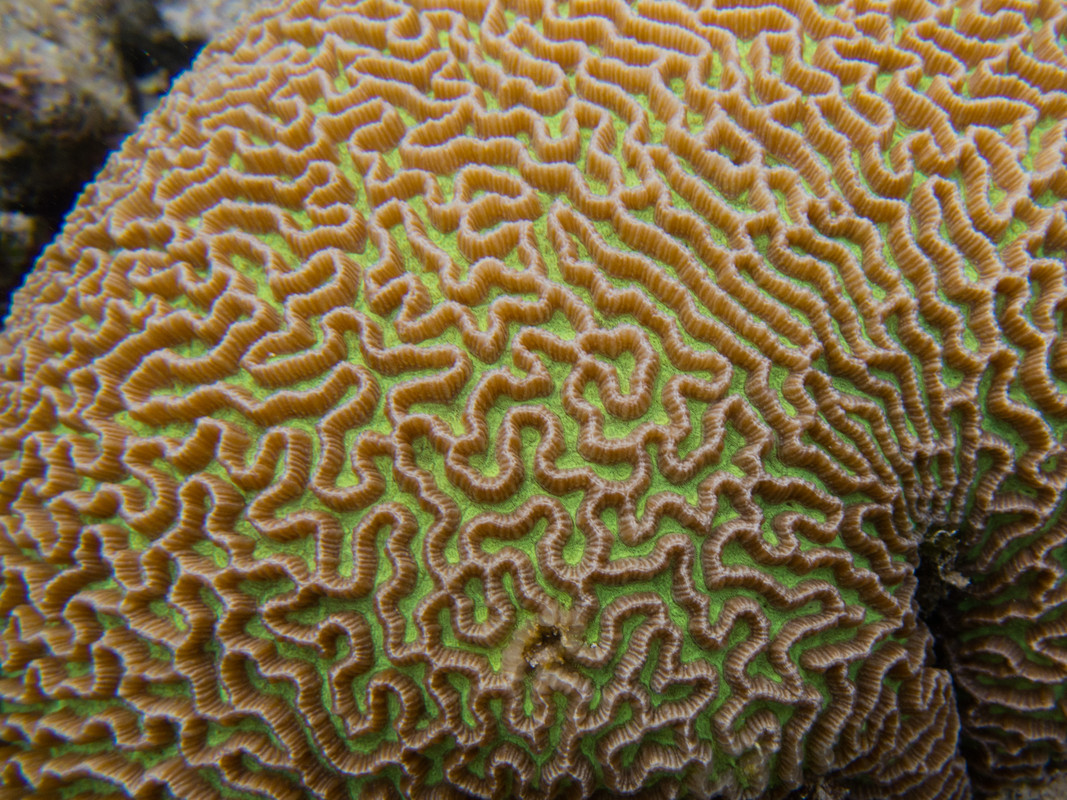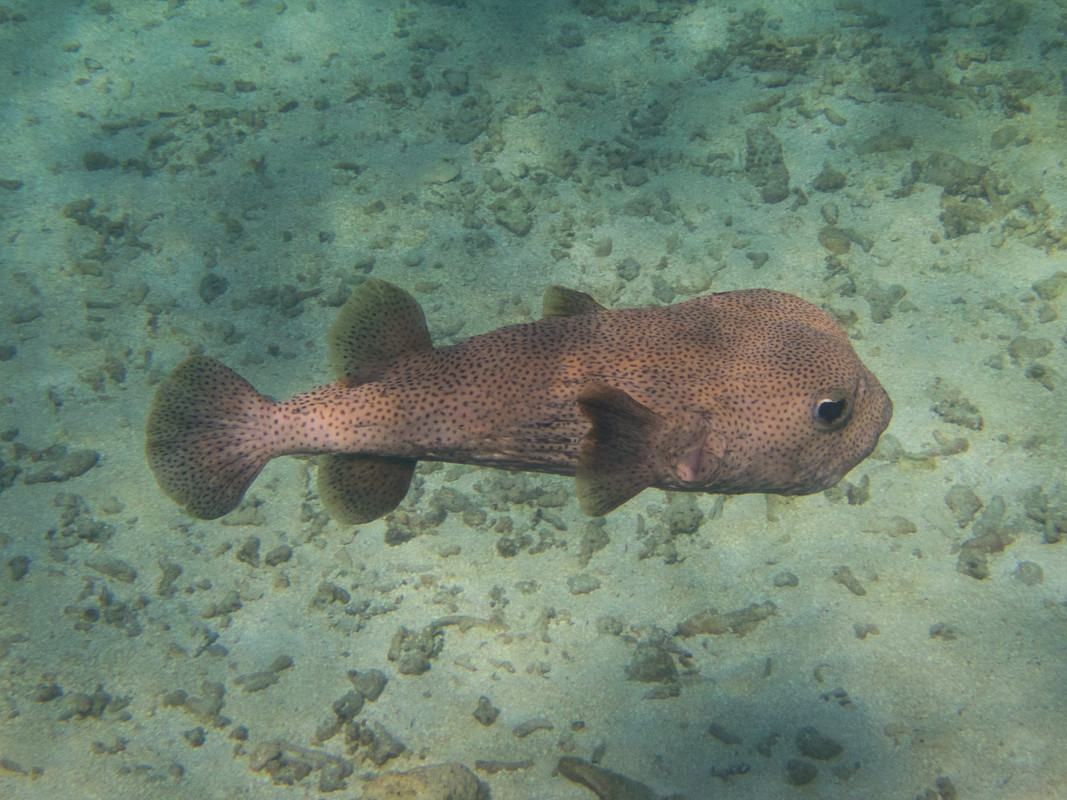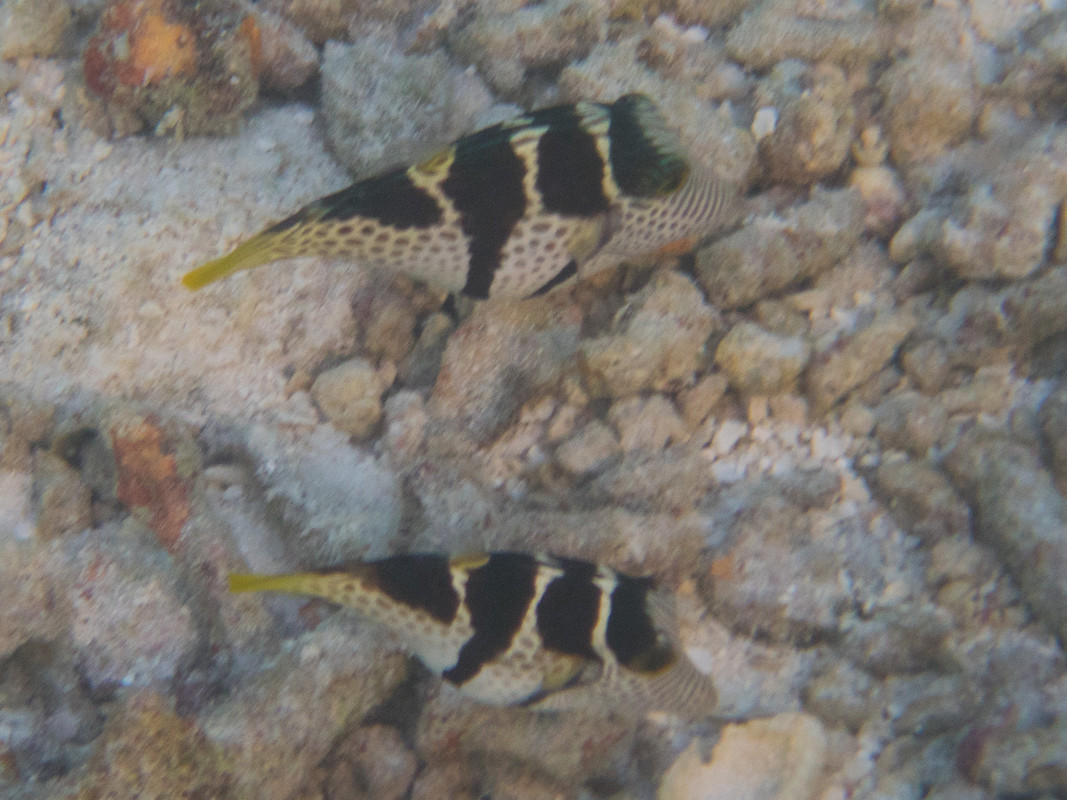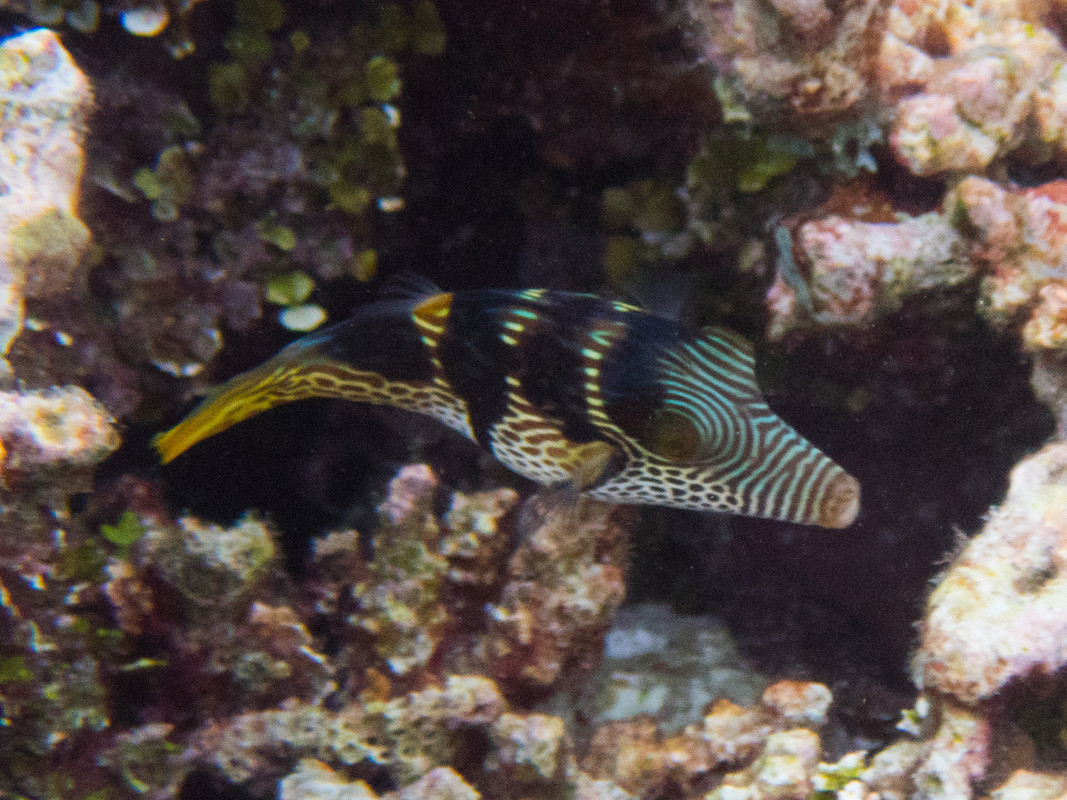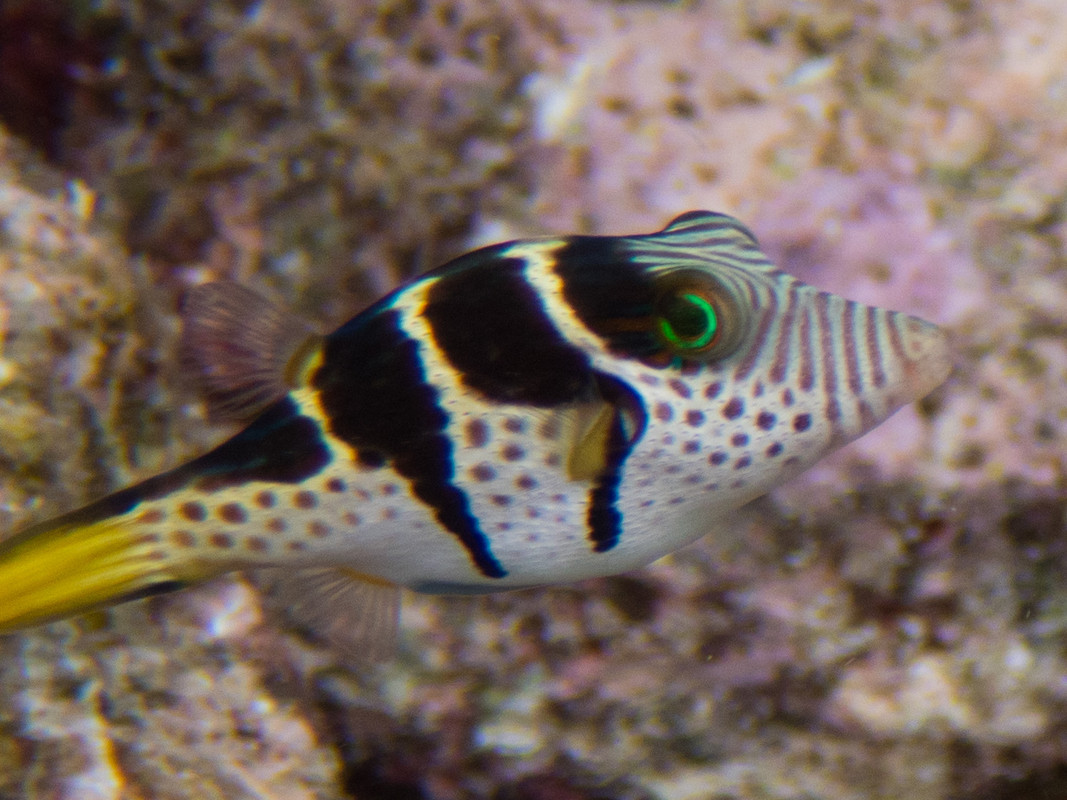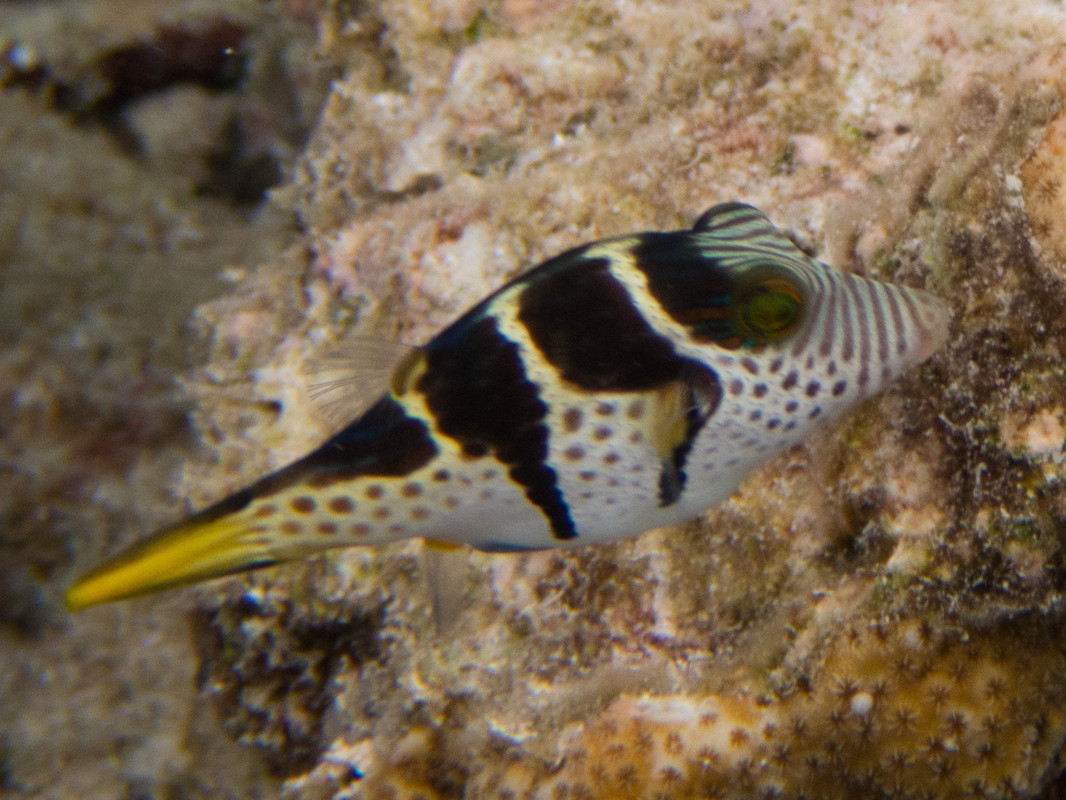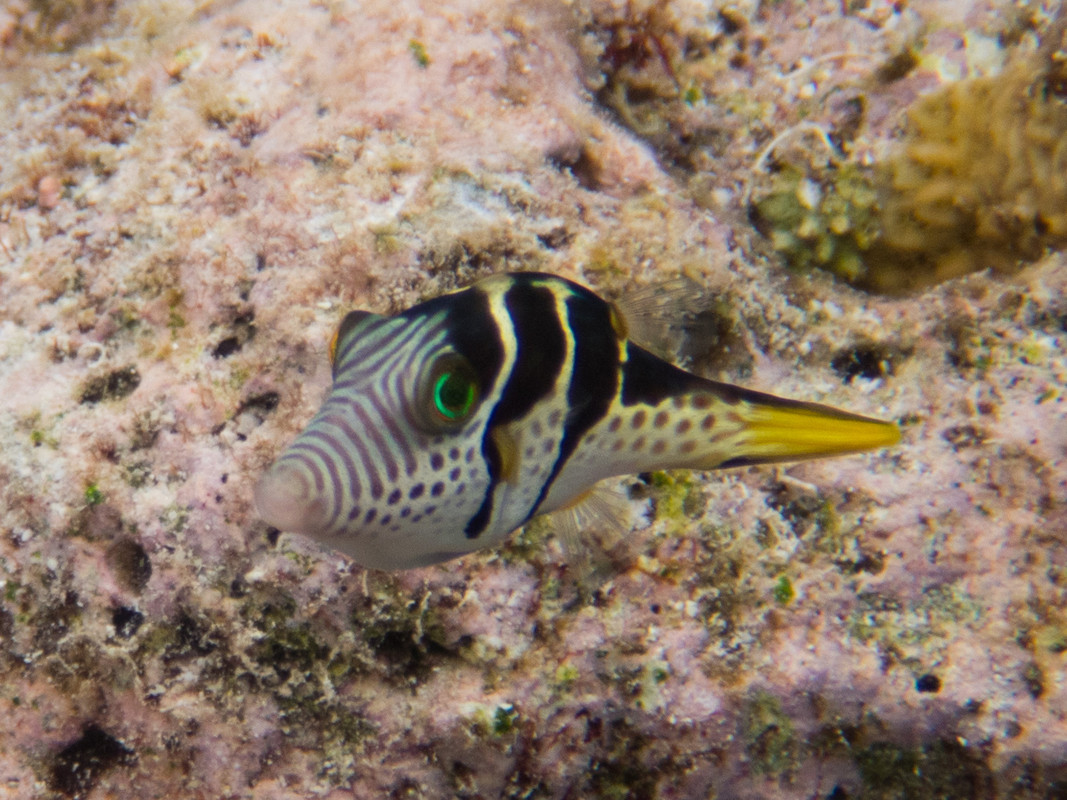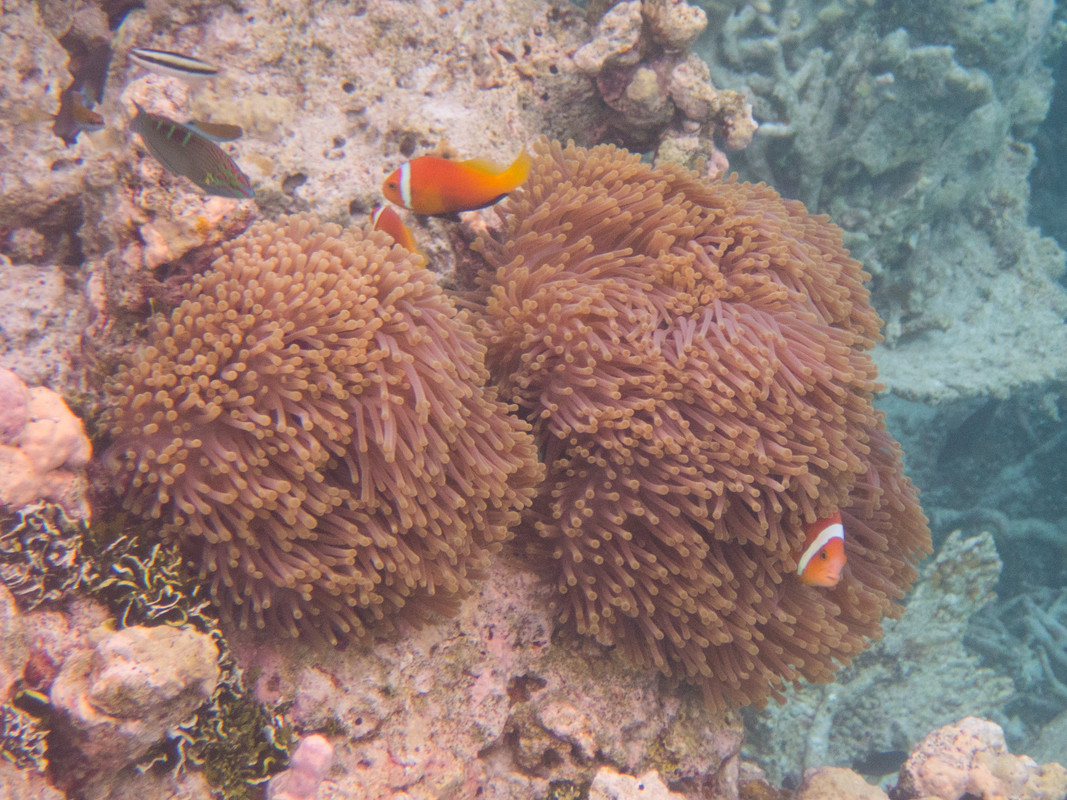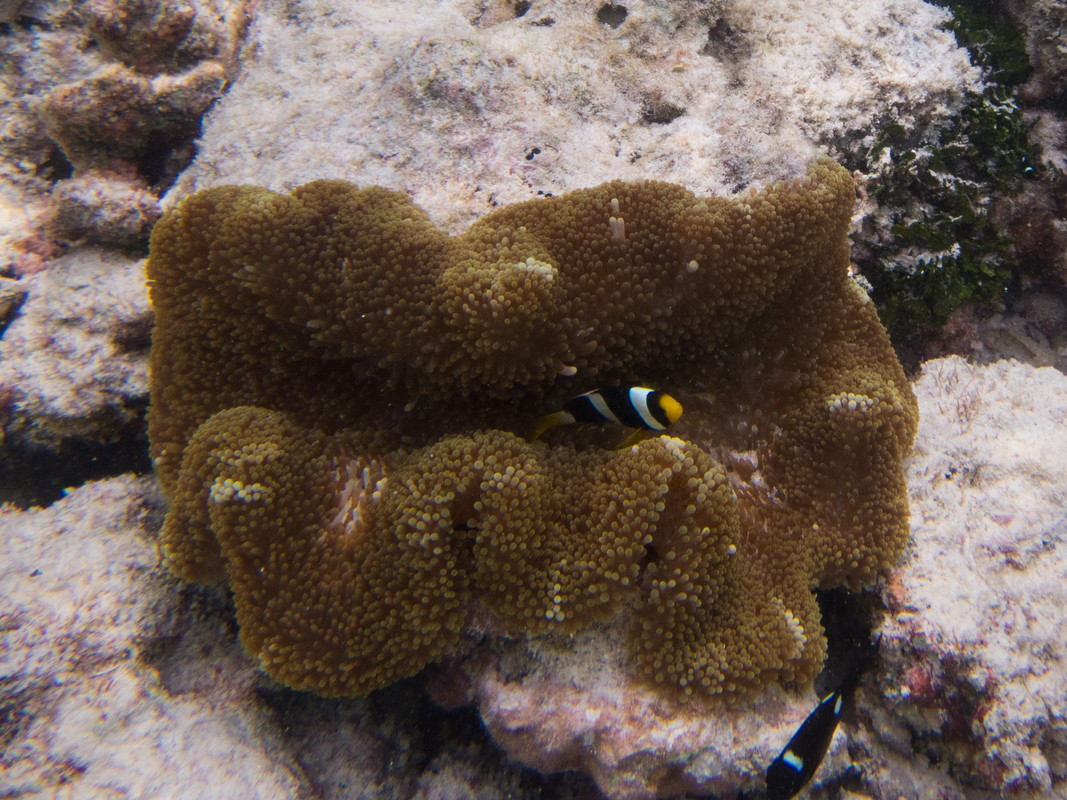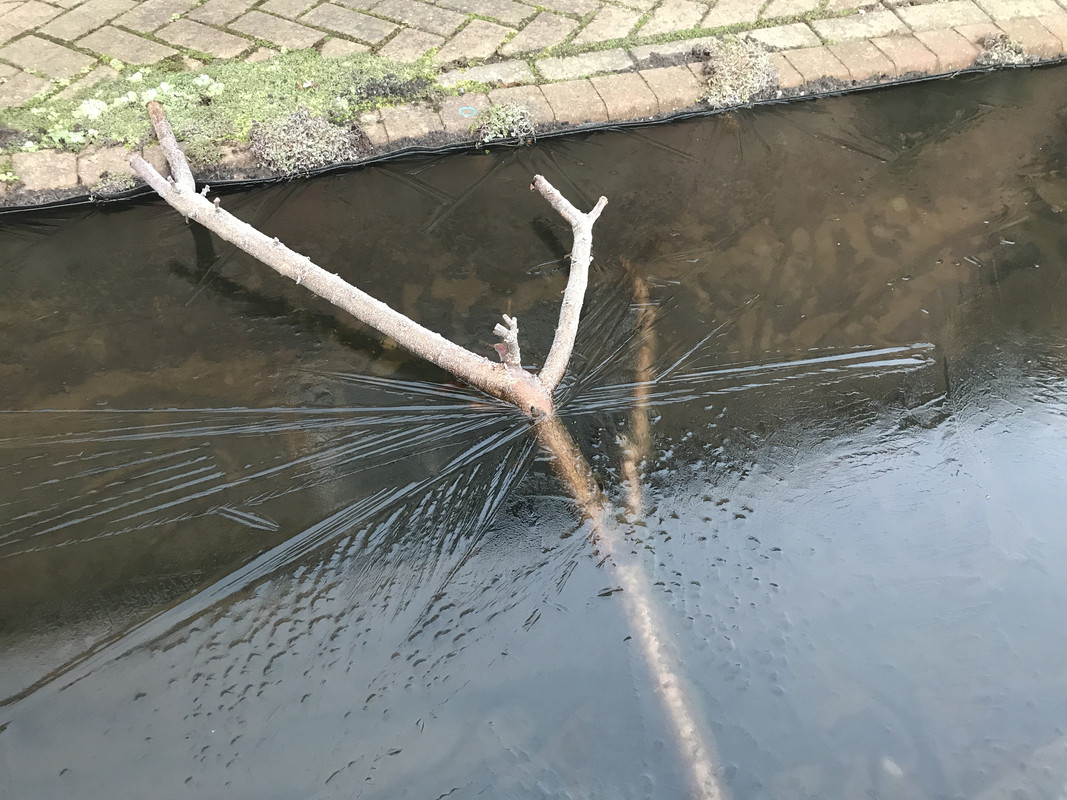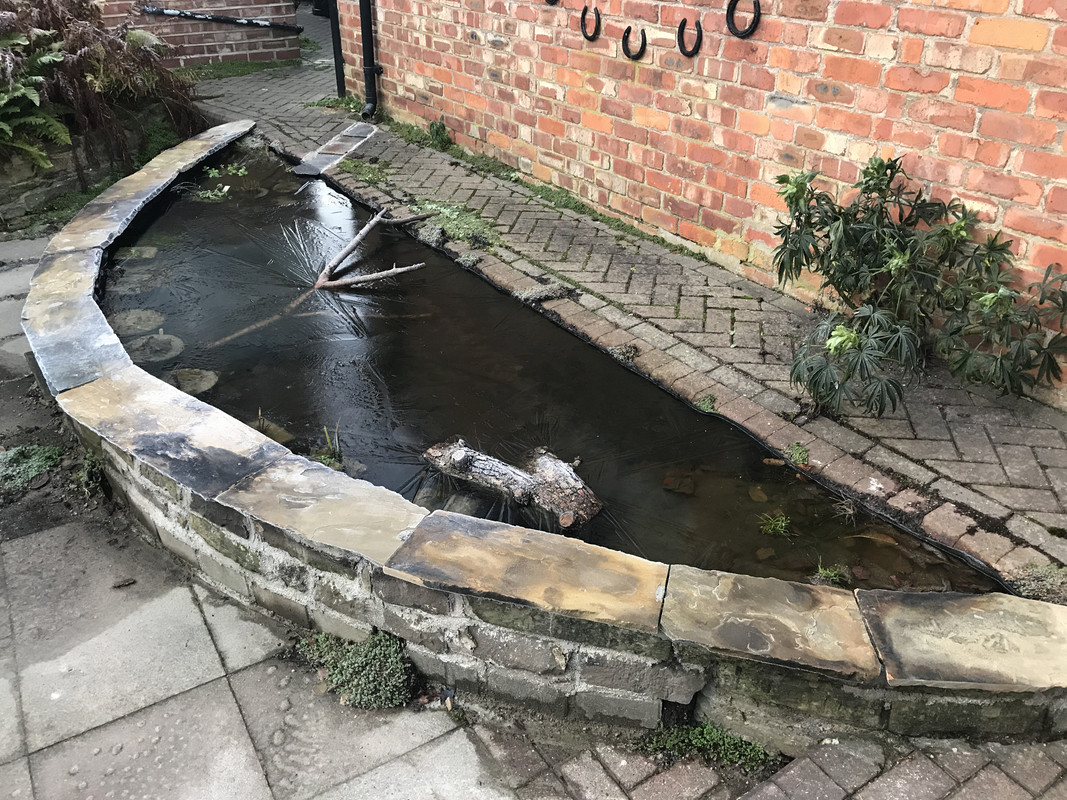One of the things that I found very interesting in the Maldives was the huge Porites boulder corals and the variety of other things living amongst them. I was fascinated by these in 2017 when they comprised most of the remaining living corals in the shallow areas, though they had died off in places. They often form huge boulders, up to 3m in diameter in my experience. Here's a typical example:
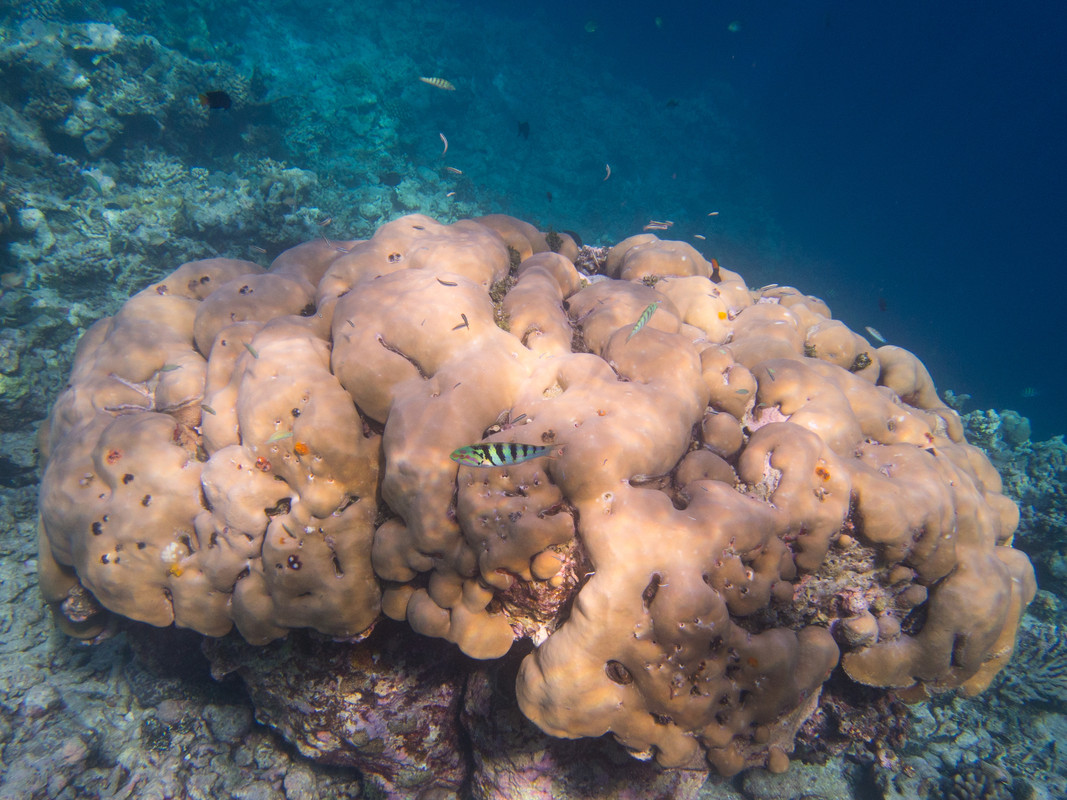
Porites have small polyps and look furry when the polyps are extended:
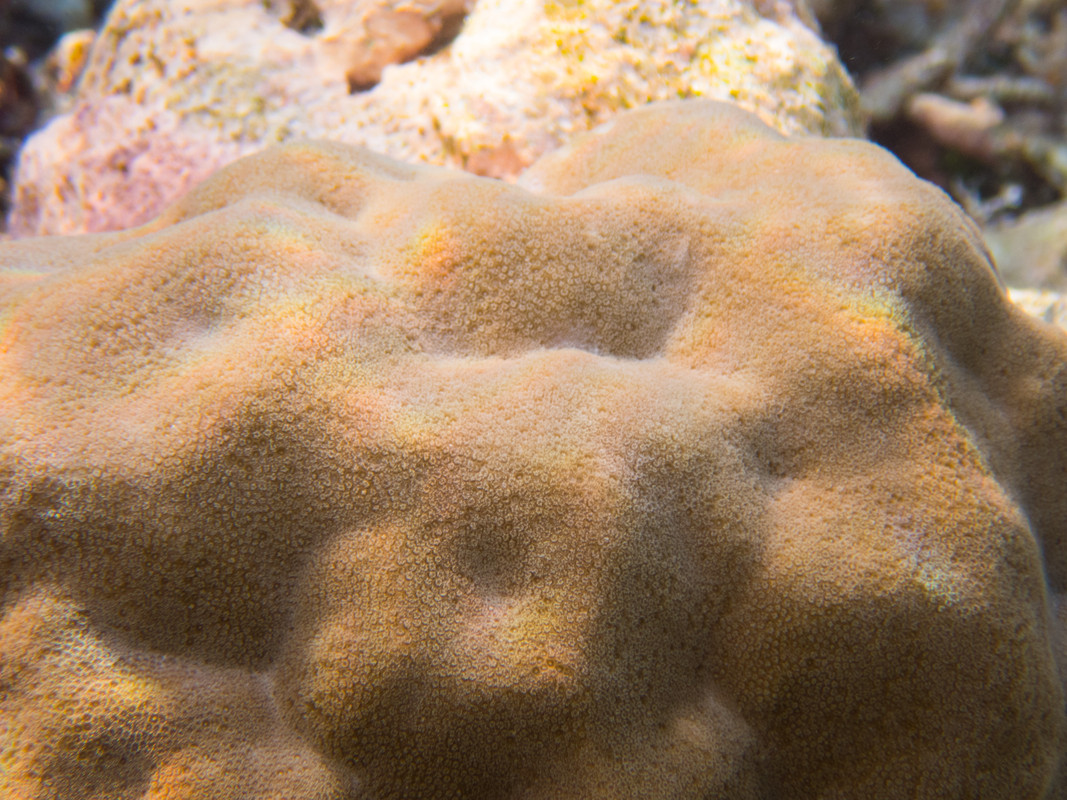
Most of the biggest Porites boulders are a warm buff colour, but this is decorated with dozens of multi-colour christmas-tree worms making a beautiful combination:


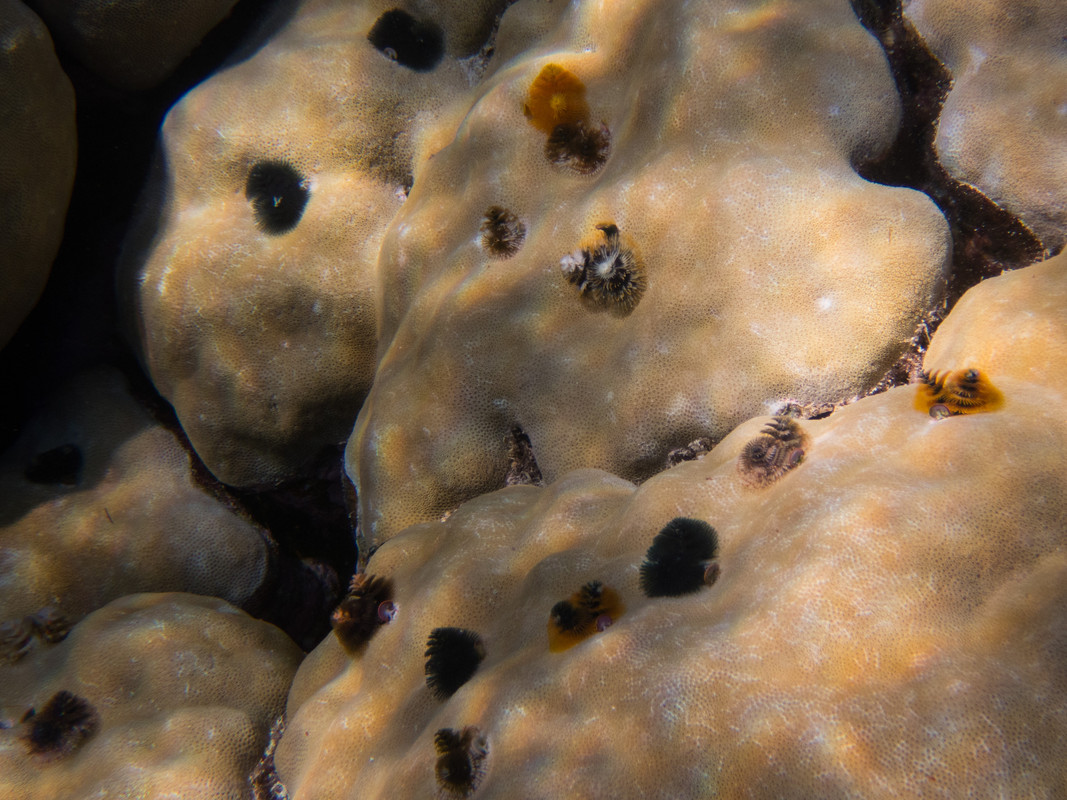

And it's not just christmas tree worms. Blue clams commonly appear in the boulders, and in areas where the Porites has died off it is common to see other corals filling the gaps, as in these examples:

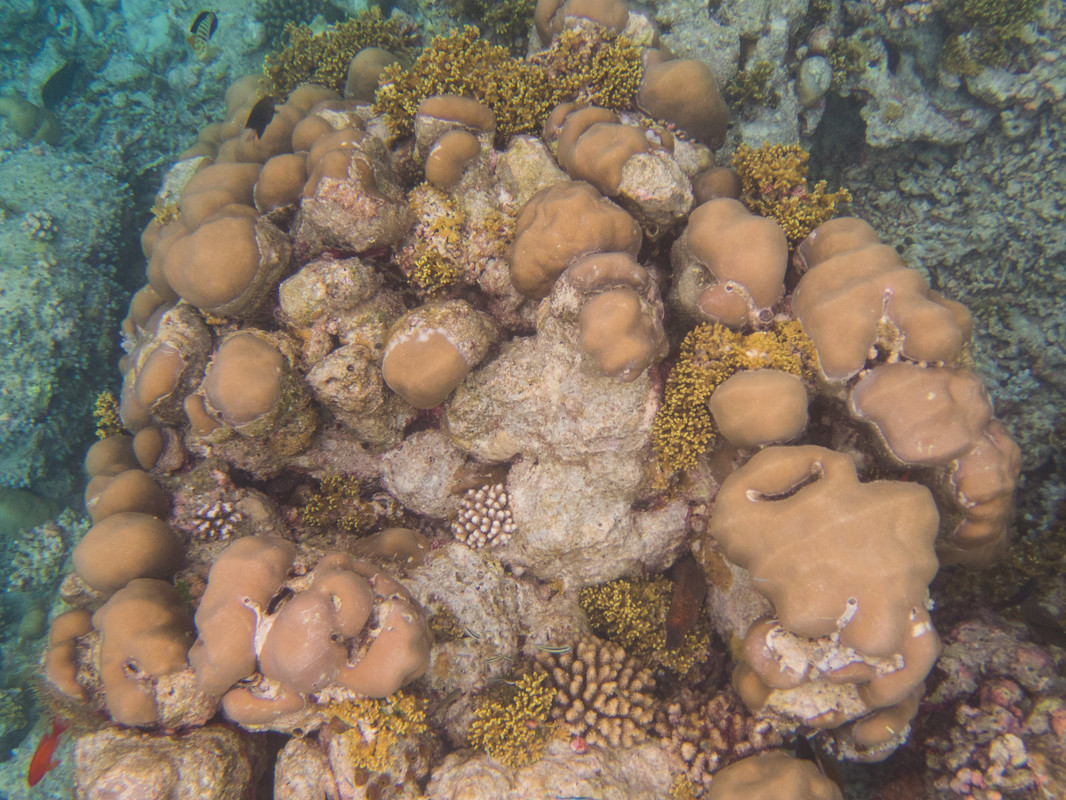

The boulders are a haven for fish, with larger nocturnal types hiding in the shadows underneath, and smaller species on the upper surfaces. This example hosts a shoal of Chromis viridis, including some youngsters lower centre:

And here's a blackside hawkfish resting on a Porites; note also the Acropora growing in the hole:

On a smaller scale, there are species of blenny and micro-goby that live on these boulders too. This photo shows the Maldives blenny (Ecsenius minutus) lower centre, and two micro-gobies (Eviota sebreei) upper centre.

Not all the Porites boulders are buff-coloured; there is also a blue-purple variant. This generally appears in smaller boulders but I did see a few huge old ones. This photo shows the side of large boulder with a blenny:

Here is a smaller one with polyps fully extended:

And here is one which has been pecked at by a Parrotfish, showing the contrast between the blue and purple parts:
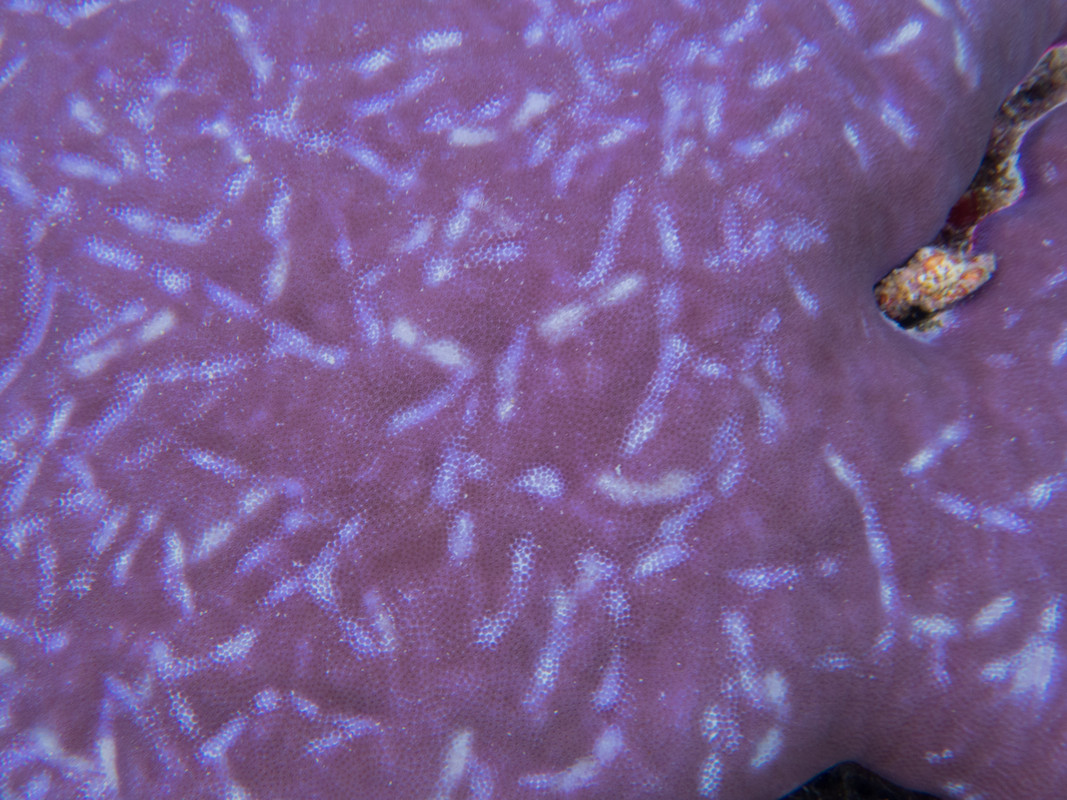
A full-scale boulder would require a huge tank, but I'd love to try and recreate part of one, perhaps in a back corner of the aquarium. It should be possible to include some of the features shown above. A few years ago it was common to see lumps of buff Porites with christmas tree worms in fish shops, but they seem to have disappeared recently. I wonder why?
I've seen purple Porites frags for sale, but not any buff ones. Perhaps they are considered too 'boring'?
In my old 120L tank I successfully grew Porites from a frag, and it was pretty undemanding for an SPS coral.

